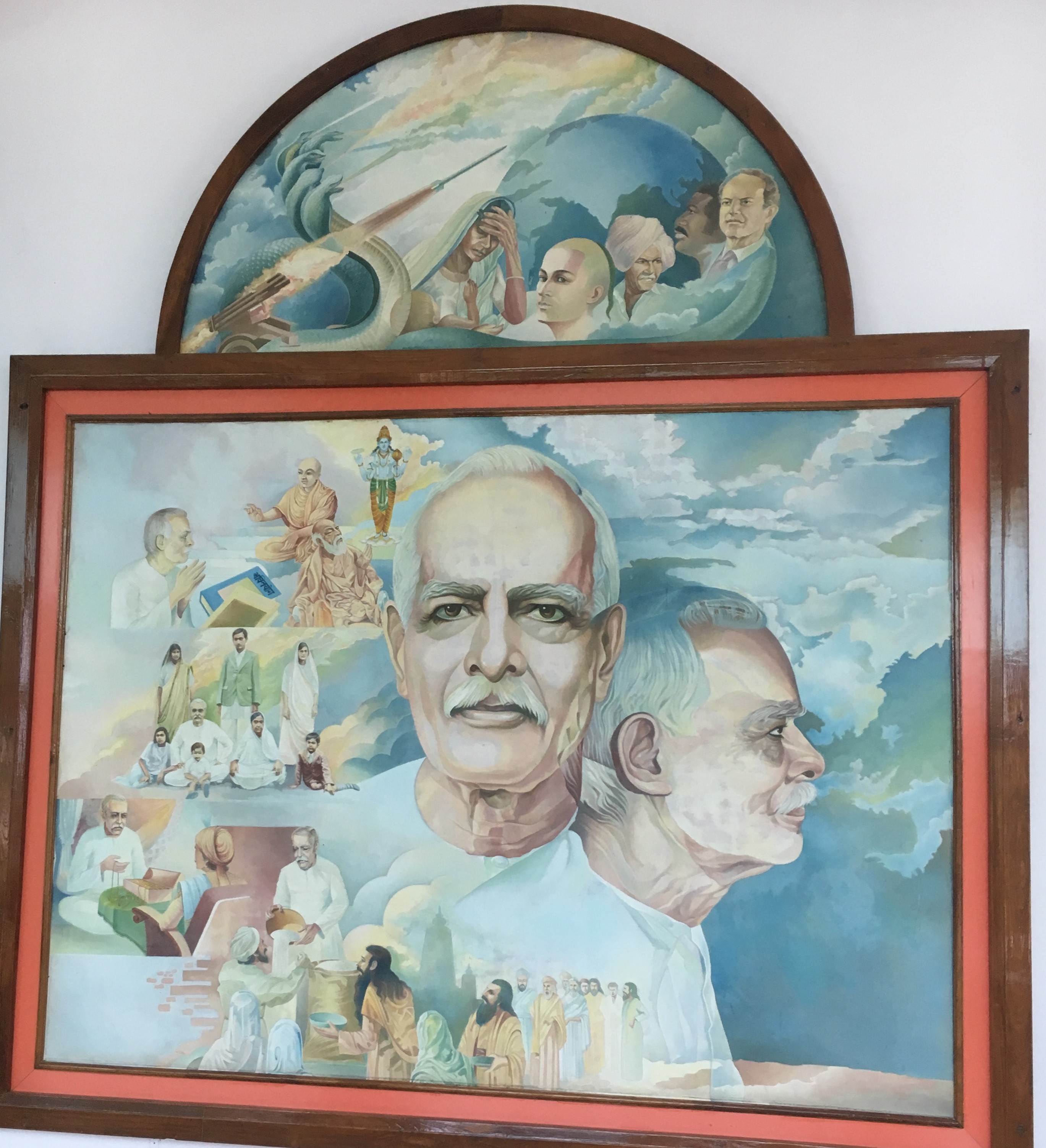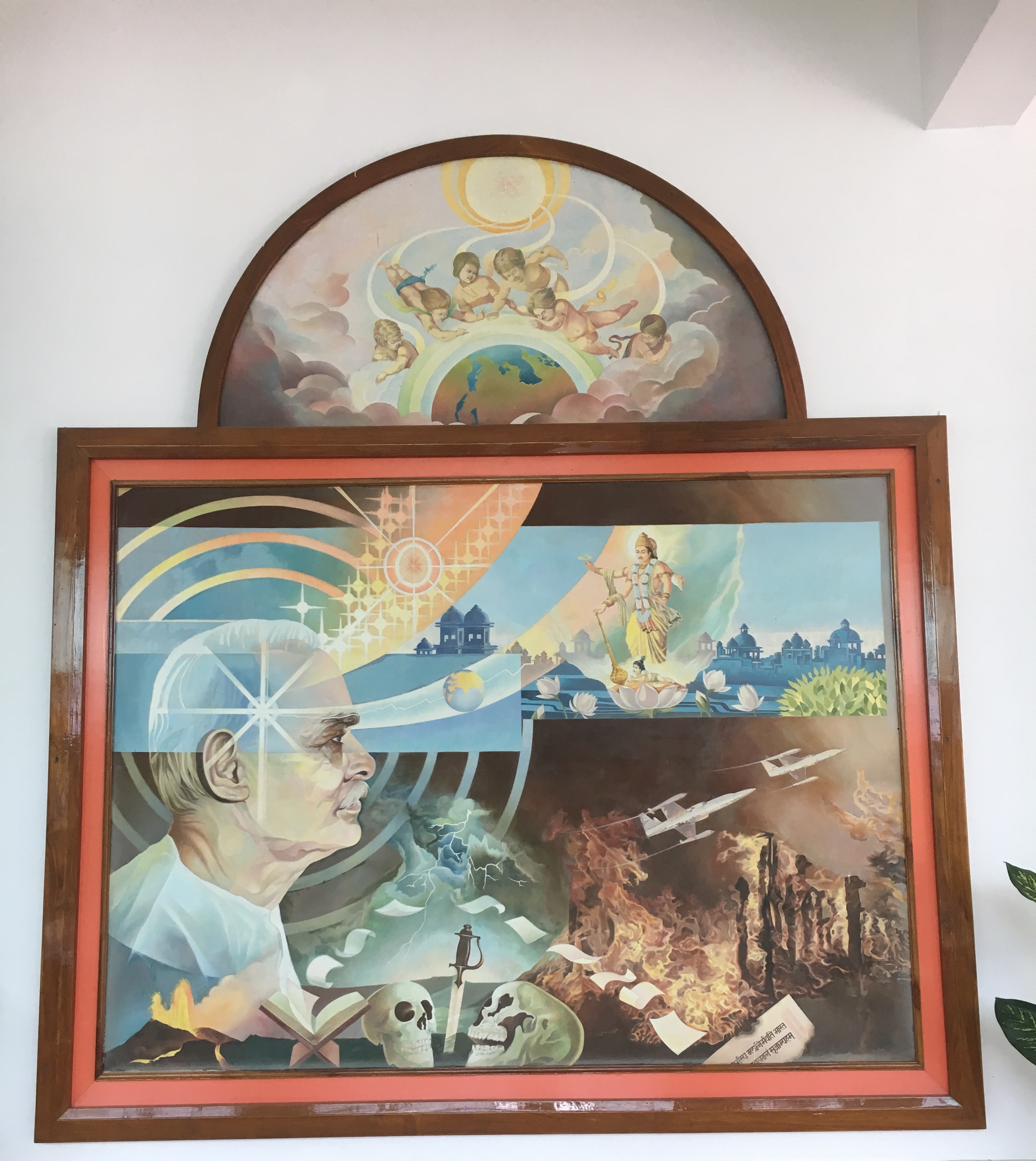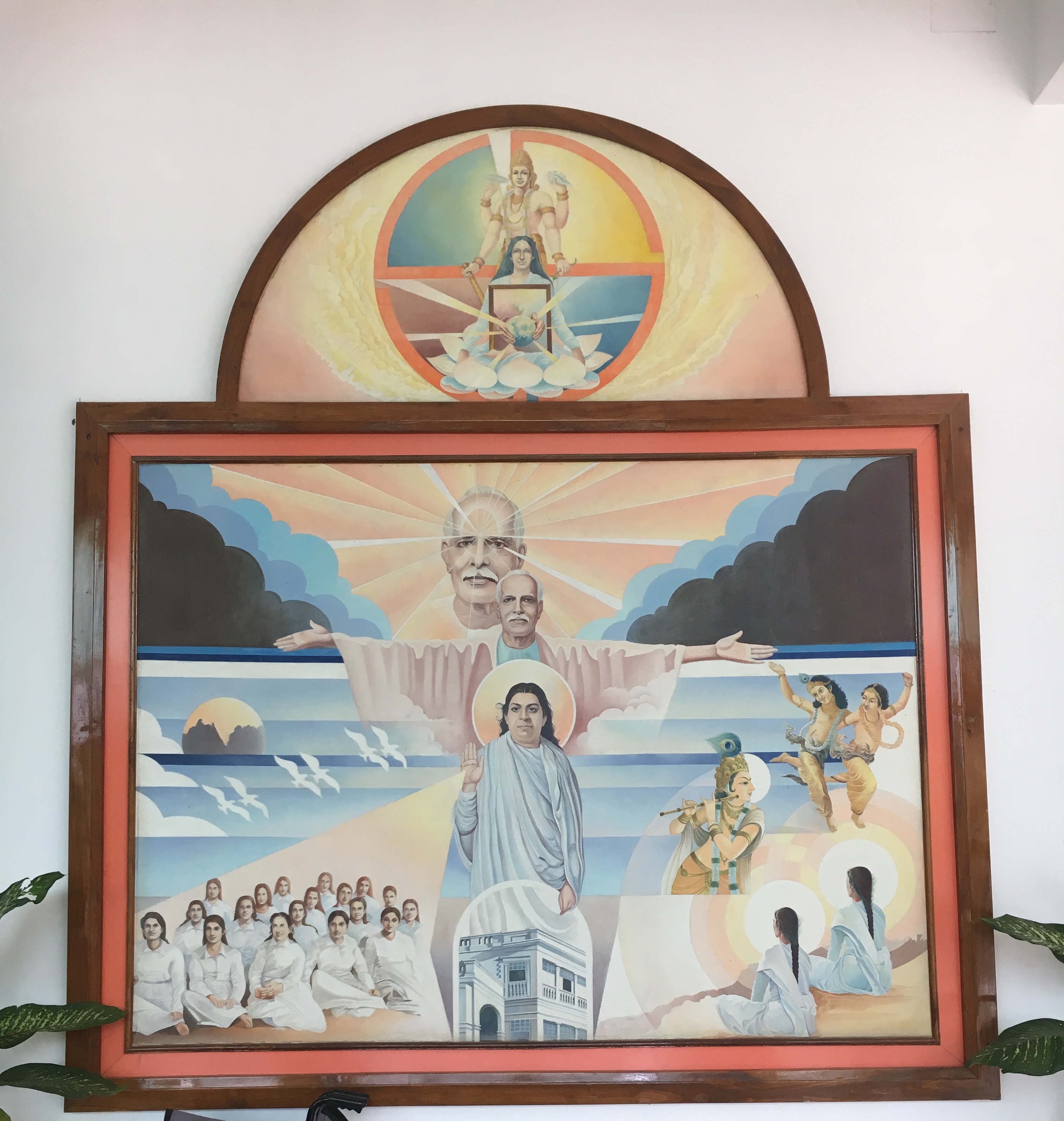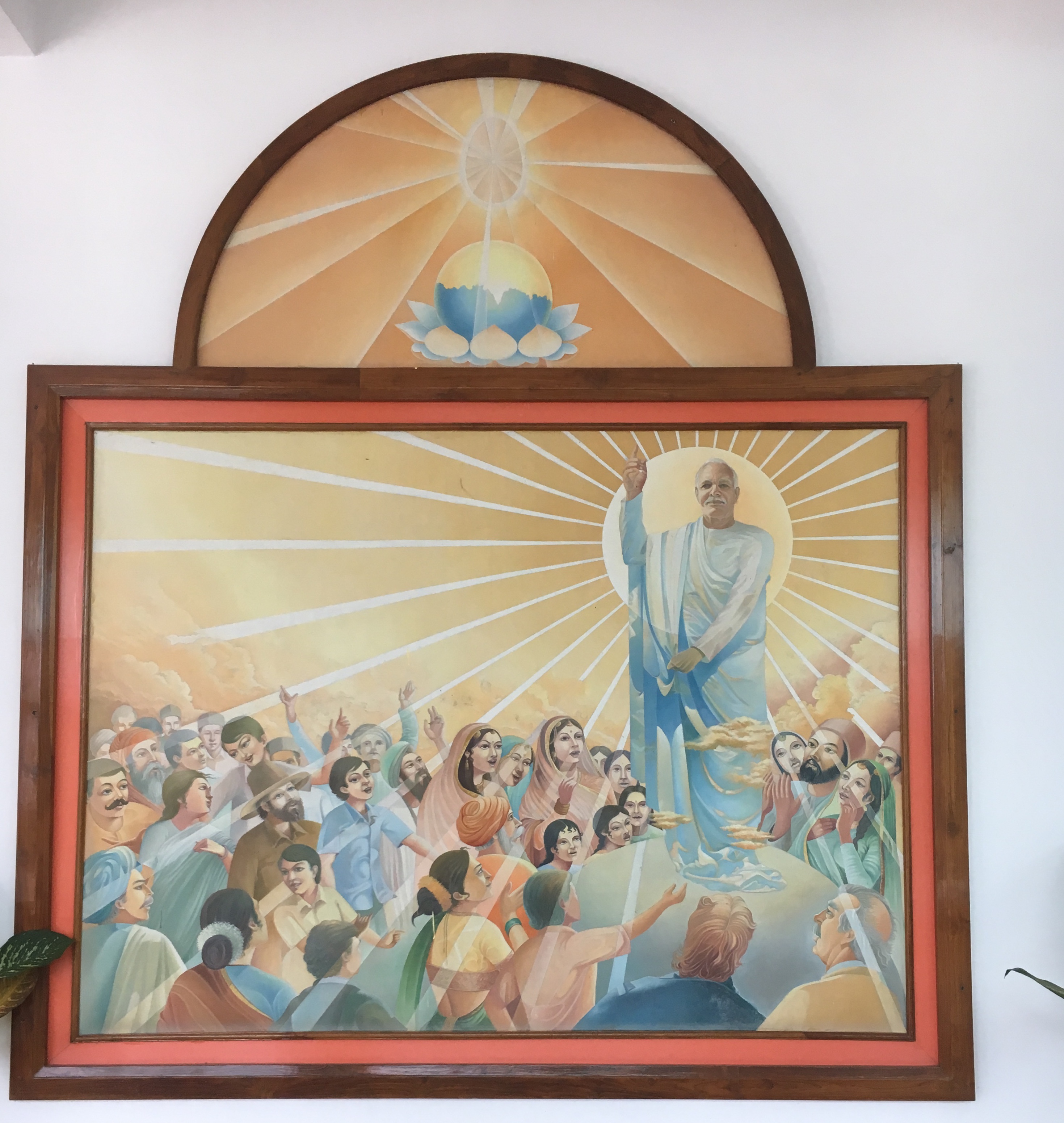Pandav Bhawan
Brahma Kumaris
Pandav Bhawan is the oldest and the smallest of the Mount Abu campuses of the Brahma Kumaris (~3.5 hectares), but figuratively it encompasses them all.1 It is Pandav Bhawan that is most closely associated with the early history of the organization. The grounds were cleared and developed in part by Dada Lekhraj and the first generations of the Brahma Kumaris in the 1950s, and served as the sole base of Brahma Kumaris activities until his death there in 1969. Too small to function as the site of the organization’s many conferences, Pandav Bhawan has become instead a place of pilgrimage.
The largest structure of this campus is an auditorium called Om Shanti Bhawan. In the early mornings, in a modest classroom underneath the main hall, the highly regarded Dr. Sachin gives his take on the day’s murlī. These expositions are given in English, in front of no more than twenty people – the room is that small – but they are recorded daily and distributed widely via WhatsApp.
Om Shanti Bhawan
Om Shanti Bhawan still serves as a small-scale event space, and it seats several hundred people in its central auditorium. Accompanying a small tour group through the building, I listened to a guide describe Pandav Bhawan as a pilgrimage place where Brahma Kumaris usually stop for no more than a day or two. Our stay lasted no more than a few hours, and a good share of that time was spent in the foyer of Om Shanti Bhawan, which had tables set up selling literature and souvenir items, which the Brahma Kumaris call “Godly Gifts.”
I was struck by four stylized paintings hung on the walls opposite these tables. Since they would be the first thing you see upon entering the foyer from the front entrance, these portraits were clearly designed to make an impression. Rendered in Art Deco style and over four feet long, each painting figures Dada Lekhraj in symbol-rich settings. Of especial note are two paintings in which the late founder closely resembles Christ the Redeemer and Plato in “the School of Athens,” respectively.
Across the street from Om Shanti Bhawan is the bulk of Pandav Bhawan, including its residential structures and dining facilities. Also among them are four buildings, each within a one-minute walk from the other, which have been named the Brahma Kumaris’ chār dhām, charging the site with the vocabulary of mainstream Hindu pilgrimage.2 More than anything else, it is these chār dhām which make Pandav Bhawan into a Brahma Kumaris pilgrimage place.
Baba’s Cottage
The first of these is Baba’s Cottage, a small bamboo shack in which the young Brahma Kumaris of the 1950’s and ‘60s wrote letters to God, whom they call Shiv Baba. A wooden postbox in the corner of the room still serves as a receptacle for such letters, and it is common to see visitors seated inside, scribbling a note on a torn diary page (a diary likely bought from the shop on the other side of the campus, if not brought with them from elsewhere).
Baba’s Room
The second of the chār dhām is Baba’s Room, a meditation room similar to those found at every Brahma Kumaris center. A padded floor is lined with benches, and at the head of the room a wooden alter displays a large backlit, airbrushed image of Dada Lekhraj, who stares benevolently toward whomever is seated before him. Above the image is a glowing red egg-shaped light, with a pinhole in the center allowing a white light symbolizing Shiv Baba to glimmer forth. Red halogen bulbs bathe the whole room in a rosy glow.
Baba’s Pillar
The third location is Baba’s Pillar, a fifteen-foot obelisk made of marble and inscribed with select sayings of Dada Lekhraj. The site marks the place where he was cremated – a low white-marble fence and a small pavilion separate the area from the rest of the campus. Visitors often perform a circumambulation of the pillar in reverence, taking their cues from broader South Asian notions of paying respects.
History Hall
The final structure of this miniature pilgrimage route is called History Hall. It is a slightly larger enclosure than either Baba’s Cottage or Baba’s Room, and it was here that Dada Lekhraj gave morning sermons, called murlīs to the Brahma Kumaris. Now, photographs of the early organization and its founder line the walls of the room, with a large portrait of Dada Lekhraj at the front. Morning sermons likely still occur here, led by senior sisters who reside permanently on the campus.
- I am still uncovering the official reason, but my impression is that Pandav Bhawan was so-named to designate the place where Brahma Kumaris could wage an internal war with their inner vikr̥tis, or corruptions. This is, in any case, how the Brahma Kumaris read the conflict between the Pandavas and Kauravas in the Mahabharata. ↩
- Meaning “four abodes,” Hindus identify two sets of chār dhām. The first refers to four temples in the four cardinal directions of the Indian subcontinent: Badrinath to the North, Puri to the East, Rameshwaram to the South, and Dwaraka to the West. The second or “small” chār dhām comprise a Himalayan pilgrimage circuit to Yamunotri (the headwaters of the Yamuna), Gangotri (the headwaters of the Ganges), Badrinath, and Kedarnath. ↩



